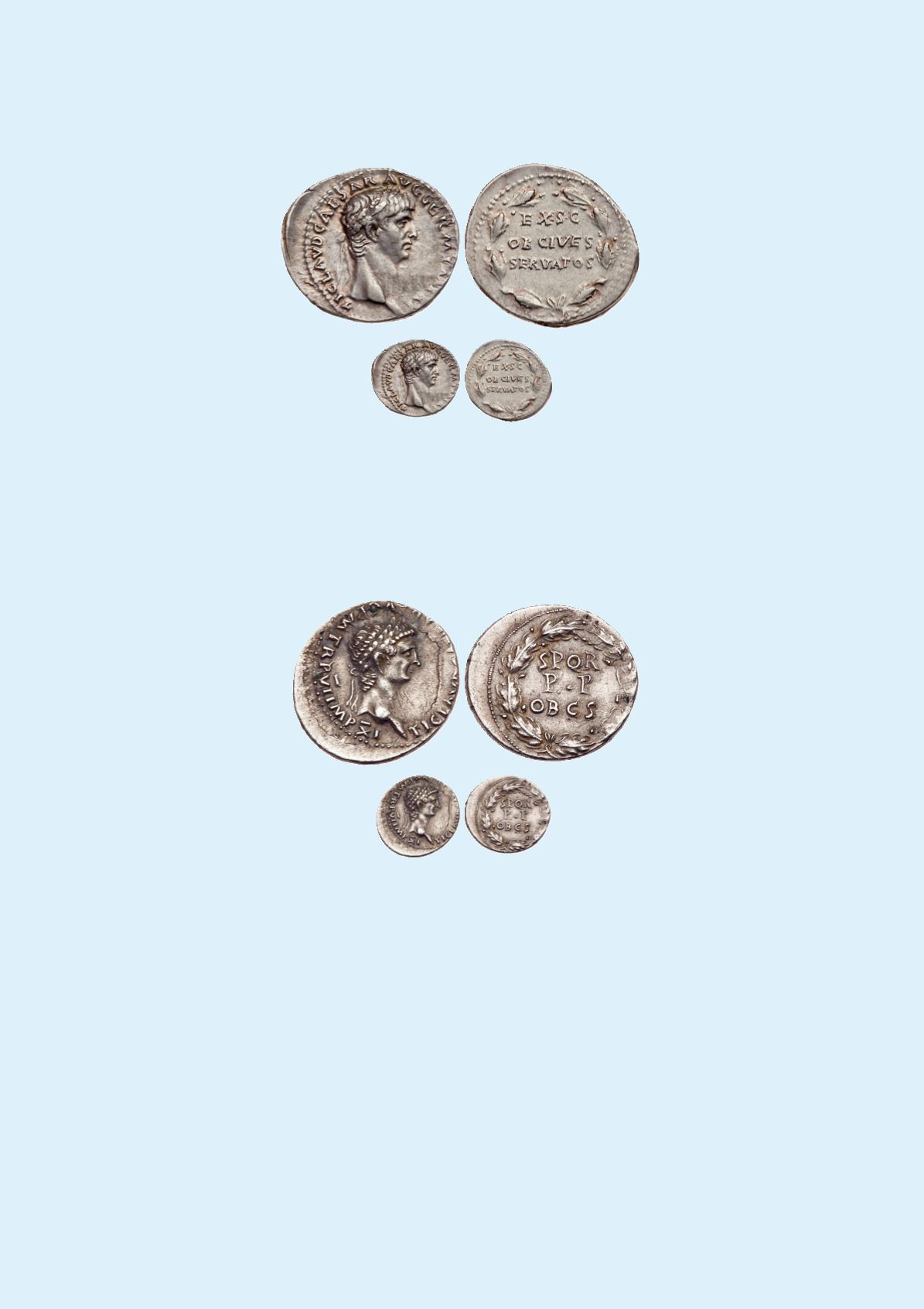

Stunning Quality Silver Denarius of Claudius
439
Claudius. Silver Denarius (3.80 g), AD 41-54. Rome, AD 41/2. TI CLAVD CAESAR AVG GERM P M
TR P, laureate head of Claudius right. Rev. EX S C / OB CIVES / SERVATOS in three lines within oak-
wreath. RIC 16; Lyon 17; BN 33; BMC 18-9; RSC 35. Delicately toned, boldly struck and well centered.
NGC grade Ch XF*; Strike: 5/5, Surface: 5/5.
$5,000
From the Dr. Patrick Tan Collection.
440
Claudius. Fourrée Denarius (2.81 g), AD 41-54. Roman-British imitation. Copying Rome, ca. AD 46/7. TI
CLAVD CAESAR AVG P M TR P VI IMP XI, laureate head of Claudius right. Rev. S P Q R/P P/OB
CS in three lines within wreath. Cf. RIC 41; North Suffolk 20-32 (dies C/3); cf. BN 59-60; cf. BMC 46-7;
cf. RSC 87. Fantastic detailed portrait. NGC grade Ch AU; Strike: 4/5, Surface: 4/5. Core visible. $2,500
From the Dr. Patrick Tan Collection Purchased privately from CNG.
This fouree denarius was struck in Britannia in imitation of an issue apparently produced to emphasize Claudius’ somewhat
distant family relationship with Augustus, the great first Roman Emperor. The oak wreath on the reverse is the
corona civica
traditionally awarded to a Roman citizen who saved another citizen in battle. This wreath was awarded to Augustus in 27 BC
for saving the entirety of the Roman state from further civil war. Under Claudius this type first appears at the beginning of his
reign, suggesting a possible claim that the emperor had averted a new civil war by his placation of the Praetorian Guard after
the assassination of Caligula. Claudius sometimes appears wearing this wreath in his sculptural depictions. The fact that the
coin is a fourrée produced in Britannia is also notable since it was under Claudius that the Romans invaded the island in force
in AD 43 and established a permanent presence. Roman coin certainly came to Britannia with the invaders, but may have been
in short supply at times, which may have encouraged the local production of imitations and contemporary counterfeits.



















